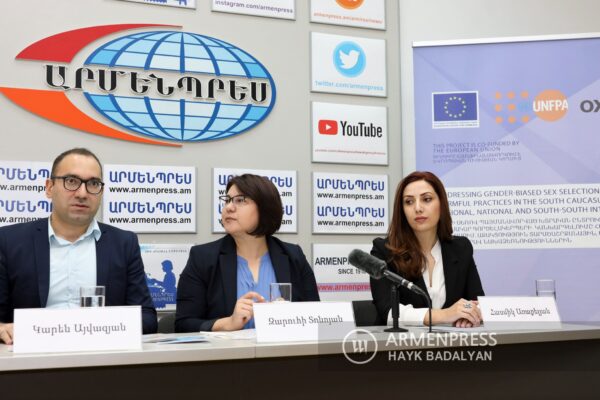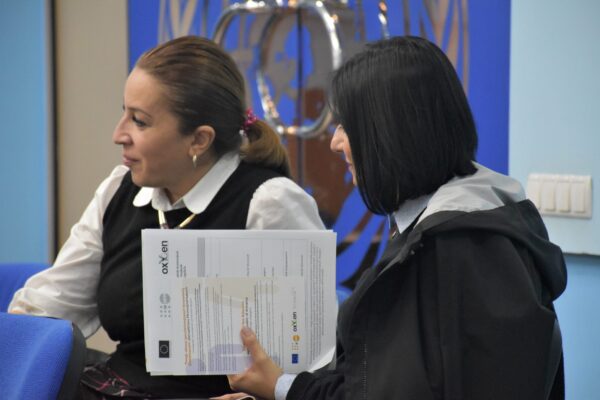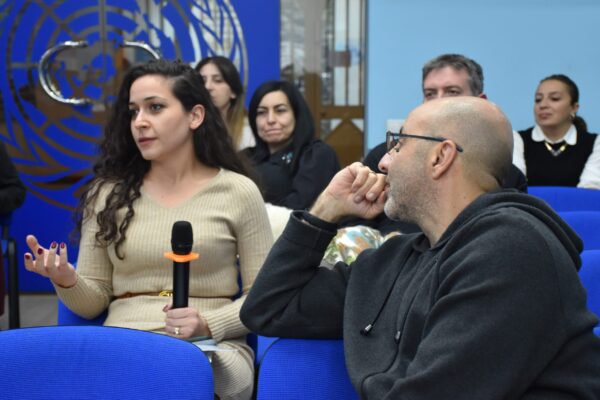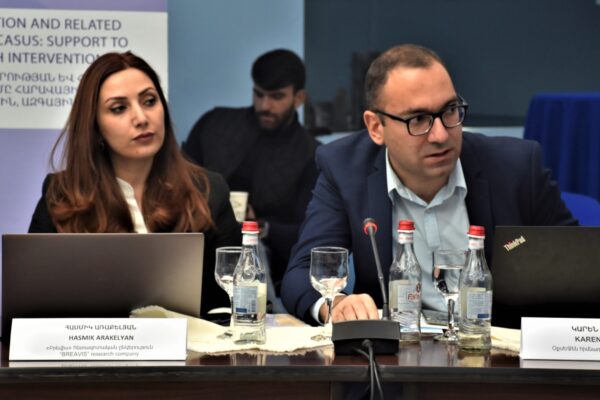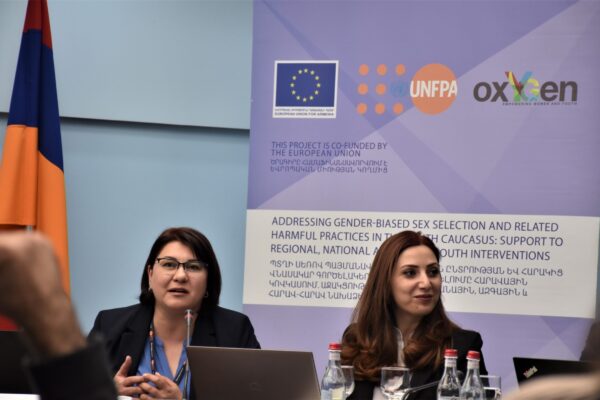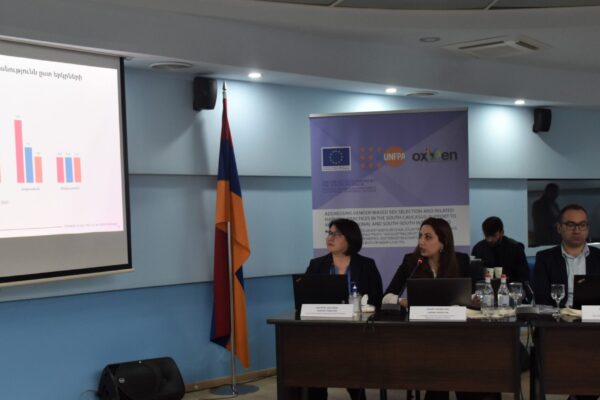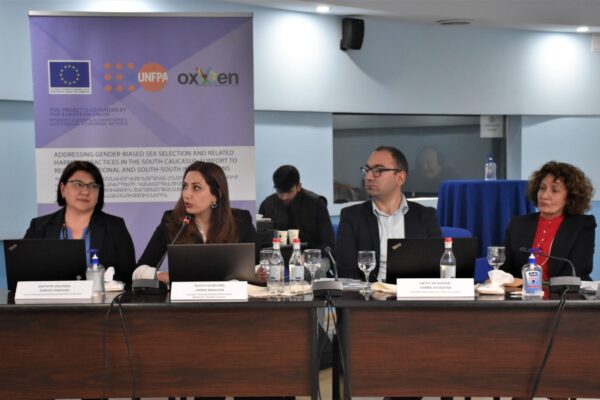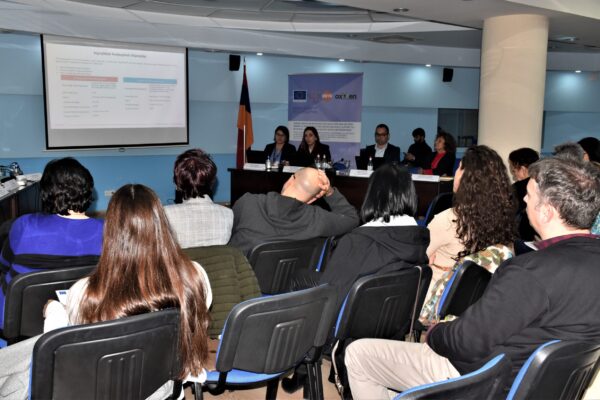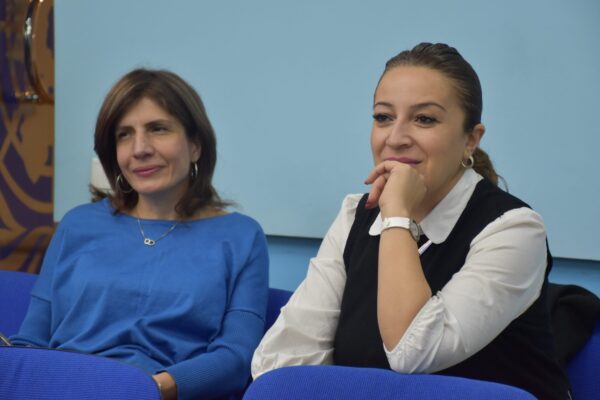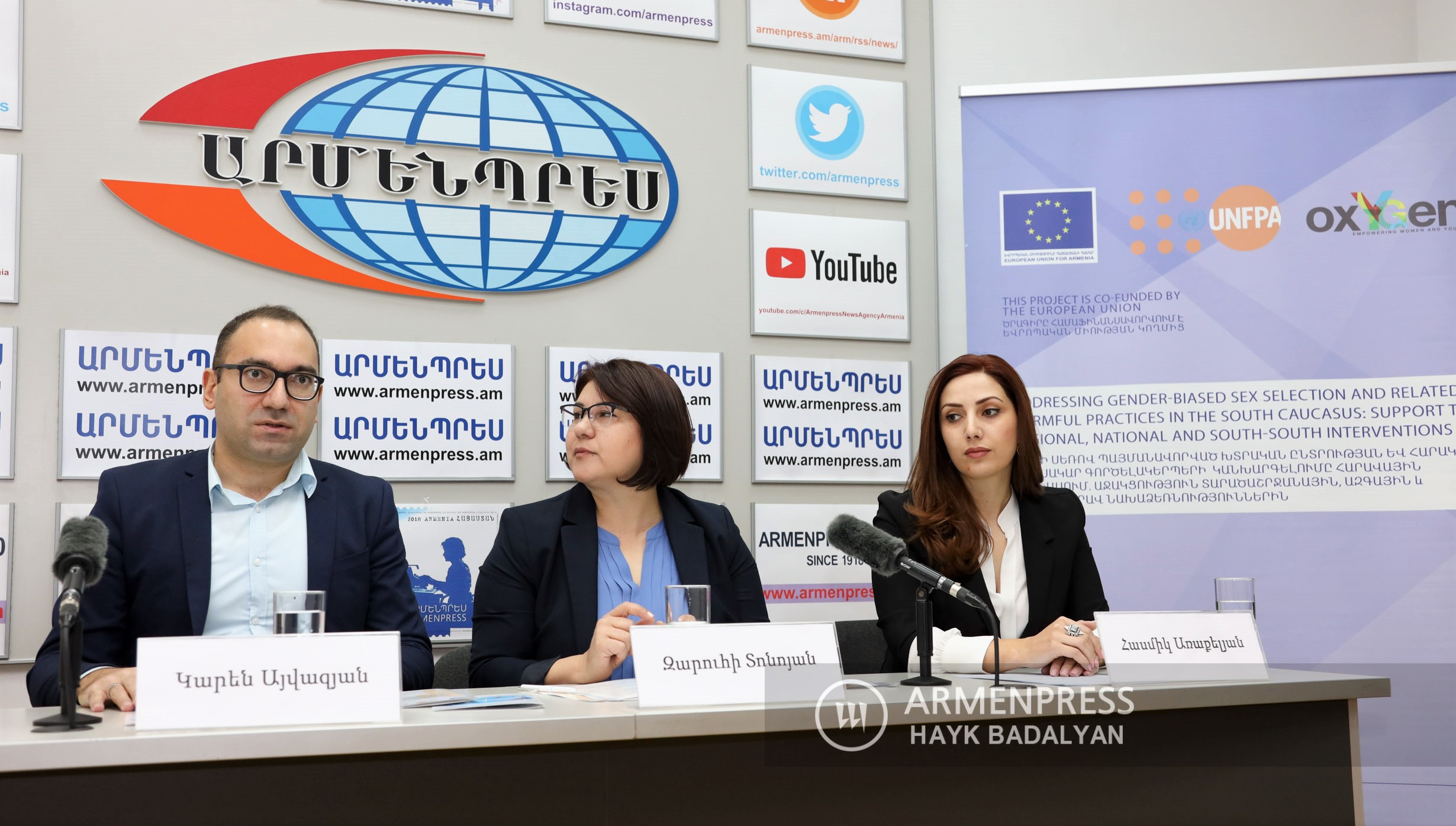
In November 7, the findings of the research “Gender-Biased Sex Selection in the Republic of Armenia” was presented to the stakeholders and wider public. At the press conference held in Armenpress news agency, and later at a conference taking place at the premises of the UN Armenia office, the representative of the United Nations Population Fund Armenia, Zaruhi Tonoyan, Karen Ayvazyan, OxYGen Foundation and Hasmik Arakelyan, Breavis Research Company presented key findings of the research and answered relevant questions. Tatevik Stepanyan, Deputy Minister of Labor and Social Affairs, Artak Jumayan, Deputy Minister of Health, Lila Pieters Yahia, Acting UN Resident Coordinator in Armenia and Bruno Montariol, International Aid/Cooperation Officer at Delegation of the European Union to Armenia and Margarita Hakobyan, Executive Director of OxYGen Foundation participated in the conference held at the UN Armenia Office and delivered a welcome speech.
The purpose of the research on gender-biased sex selection (GBSS) in the Republic of Armenia (RA) is to identify the attitude and behavior of 18-49 years old ever-pregnant women and their family members with regard to sex-selective abortions. The research pursued the goal of assessing the prevalence and causes of sex-selective abortions in Armenia, as well as the changes and trends in this field over the past 5 years, by making comparative analysis of the research conducted in 2017.
The research was conducted in June 2022 with a confluence of quantitative and qualitative methods, employing three data collection methods: document analysis, telephone interviews with 1920 women aged 18-49 and focus group discussions involving decision-makers in the field, healthcare practitioners, experts, and married women and men. To leverage the comparative analysis, the methodology and sample size of the survey of 2017 have been applied.
A few of the research findings are featured below.
Preference of child’s sex (generic data)
Overall, across all marzes of Armenia the percentage of respondents with equal preference has decreased as compared to 2017, and the percentage of respondents who prefer a child of any sex has gone up. In families, 18% of respondents prefer boys, and 11% girls, wheras in 2017 the preference for boys made 13% , and for girls – 5%.
As per 2022 research data, claims on equal treatment of both sexes in their family were made by 70% of respondents. Conversely, a smaller share of respondents, 36%, believe that people surrounding them give equal preference to both sexes.
The lowest score of equal preference was reported in Gegharkunik – 60%. The data of 2017 survey for this indicator has been 75%. The best score evidenced came from Kotayk, 77%.
The indicators of equal preference are directly proportional to the level of education and income: 75% of those giving equal preference to both sexes of a child have either bachelors of postgraduate degree, and similarly 75% earn higher income.
The study of boy or girl preference indicators by regions/marzes sheds light on the fact that boys most preference for boys is manifested in Gegharkunik marz (33% of respondents from this marz. Tavush is the only marz where the proportion of those preferring girls in the family is higher (17%). Moreover, the preference for girls in Tavush marz has increased in 2022 compared to the data of 2017. In Yerevan, these indicators are equal.
Preferred sex of child during the first pregnancy
The analysis of indicators referring to the child’s sex preference during the first pregnancy shows that overall, the preference for boys over girls persists, while the proportion of those wishing to have a girl at the first pregnancy increased versus 2017, both among women, as well as the husband/partner (10-11%).
Scrutiny of child sex preference during the first pregnancy by the type of settlement reveals that in rural communities girl preference has increased by 7% and boy preference went downward by the same percentage as compared to 2017,, even so the number of those who prefer boys remains higher.
Yet, in urban areas of marzes, the preference for girls has not only increased, but also supersedes the number of those who prefer boys.
Looking at the figures by marzes, it is apparent that during the first pregnancy, the husbands of all respondents give more preference to boys. Interestingly, women in Lori, Syunik, Tavush, Vayots Dzor and Yerevan give more preference to girls.
As for the answer “there is no difference” the share of respondents going for this option is higher in Tavush and Vayots Dzor versus other marzes.
Reasons
When referring to the reasons for preferring one or the other sex, 91% of respondents stated that they preferred sons in the family, because “sons continue the lineage”, 83% stated that “sons are the defenders of the motherland”, 67% – “sons are heirs to property”, 59% stated that “it hurts the parents to see their daughter’s difficulties.”
Seventy-five percent (112 respondents) of respondents who indicated that “after marriage, the daughter is no longer yours” said that “it hurts the parents to see their daughter’s difficulties”, and 69% (102 respondents) said that “marrying off the daughter is psychologically difficult.”
Respondents whose families prefer girls, in 67% of cases stated that “daughters are always ready to help parents”, in 10% of cases that “there are fewer girls in the family”, and in 5% of cases that “love for girls in the family is big.”
Sex preference by order of pregnancy
The proportion of girls and boys born as a result of first pregnancy is equal to the natural level, however, the proportion deviates already during the second pregnancy that is the preference for boys grows. The biggest sex imbalance is in the case of the fourth child unlike 2017, where the biggest disproportion reported.
Moreover, the trends of abortions based on the sequence of pregnancies show that after the third pregnancy, the number of female fetus abortion increases compared to that of male fetus.
***
Two policy briefs have been prepared on the basis of the survey findings.
The role of education and health systems in prevention of gender-biased sex selection in Armenia
The POLICY BRIEF of the research can be found at here.
The research was carried out in the framework of “Addressing Gender-Biased Sex Selection and Related Harmful Practices in the South Caucasus: Support for Regional, National and South-South Interventions” project. The project is implemented by the United Nations Population Fund (UNFPA) in cooperation with the OxYGen Foundation, and is funded by the European Union and UNFPA. The research has been conducted by Breavis.


